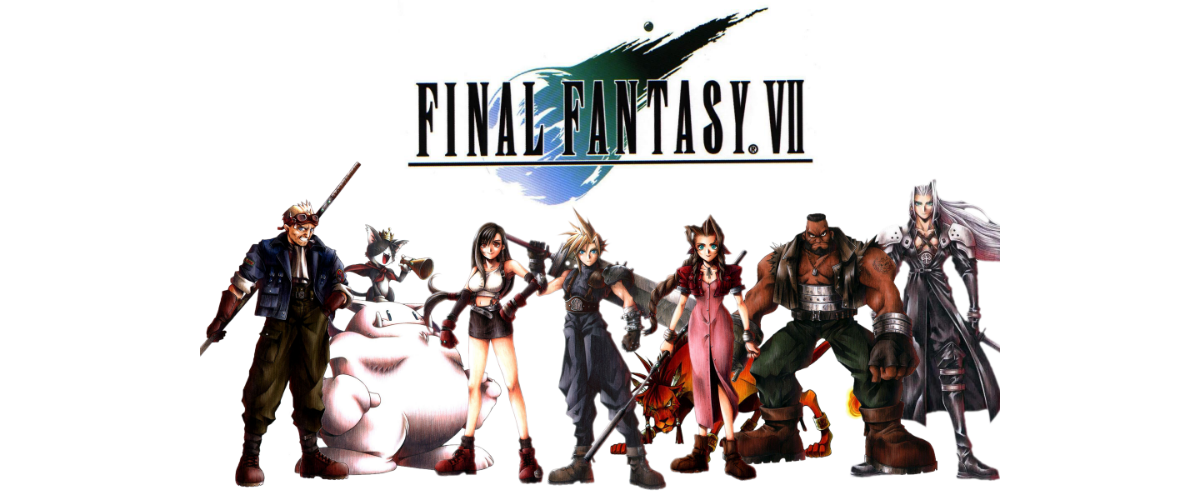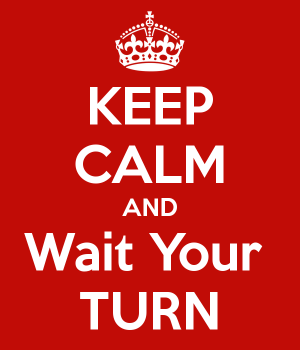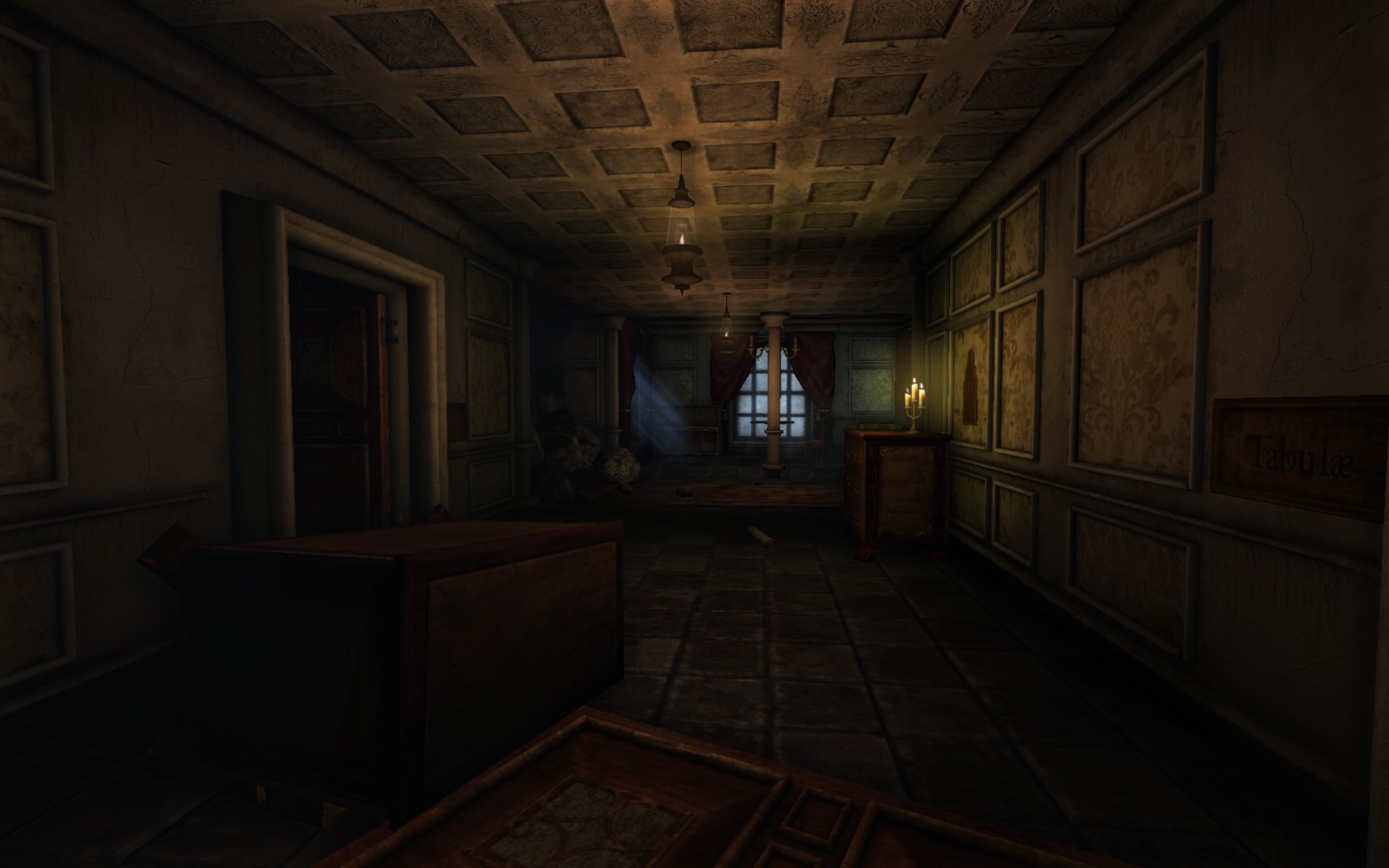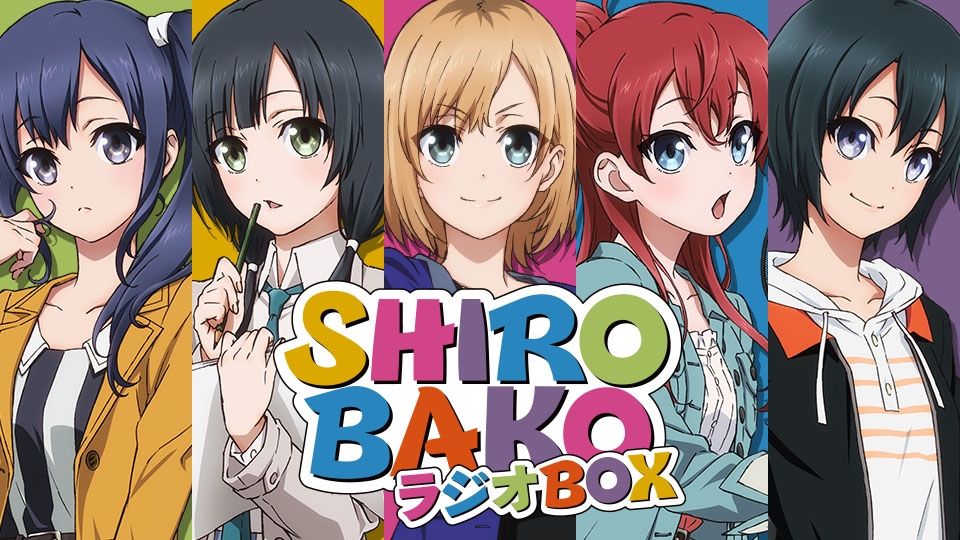I’m not sure that people know what “Greatest of All Time” means. It gets tossed around an awful lot at some awful things to really keep any sense of dignity. All this month we’re deep in the nostalgia pool, and I think it’s high time to finally pick at the crusty scab that appears on far too many Best Ever lists. The specific spiky haired pustule I aim to lance this time is Final Fantasy VII.
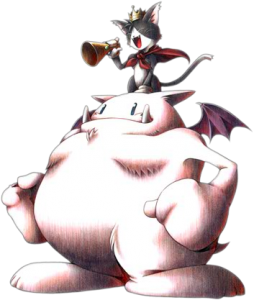
Make no mistake, Final Fantasy VII is objectively bad. It isn’t just the worst of the modern Final Fantasy games, it’s also probably one of the worst Playstation games, if only because it takes 40+ hours to get to what passes for an ending. It’s an ungodly 40+ hours too, filled to the brim with cliched archetypes well past their sell by date and game mechanics that make Microsoft Excel look like Super Mario 3. If Final Fantasy VII is the Greatest of All Time at anything – it’s the best ever at convincing people it’s not total moogle shit. So let’s power up the MAKO Cannon, because this is the Takedown.
The Gameplay
Let’s get the pinata party started by talking about Final Fantasy VIIs‘s poor excuse for gameplay. The moment to moment gameplay – the core if you would, in Final Fantasy VII is the combat system. Oh, there’s a lot of other garbage in this particular pixel dumpster fire, but none of that is part of the challenge of the game. There’s no way (unless you end up going on an awkward date with Barret) for a player to fail the dialog choices. No fail state = no gameplay. This means the combat system gets the unenviable task of supporting the gameplay of this whole syphilitic endeavor, and it’s just not interesting.
This becomes a problem. You see Sid Meier once defined gameplay as, “A series of interesting choices,” and while he is most famously known for strategy titles, this is true for basically every game. These choices can run from the large strategic ones, to the small momentary ones. Examples of the former include picking the order of Robot Masters to fight in Mega Man, and an example of the latter is picking which weapon to use based on the situation (hint: the answer is almost never Rush). In either case, there are an assortment of choices. Choices though are not the only thing needed for gameplay. I mean, the dollar menu has a selection of choices, but all of those choices are gonna end up with you crying on the terlet. The important part is structuring the game so as to make those choices meaningful.
To facilitate choice making, Final Fantasy has historically used a turn based combat system. Early ones used a static system when on the player’s turn they had the opportunity to select the actions for each character. Then once everything was set up, the combat round would play out. It’s hardly groundbreaking, and I am not going to figuratively fellate the virtues of kicking it old school, however it does allow for choice.
You see, one of the advantages of turn based combat is that it allows a player to think and plan. It makes for some interesting choices. Do you attack or heal? Is there a specific type of magic that a character could use that would be more powerful? In other words, a turn based system ought to allow a player to consider their options, and in a perfect world the game is designed to make those options important to the outcome. A good example is Pokemon. It’s also turn based because a player needs to know how the different elements/systems work together to succeed. For the most part it is not something someone can just breeze through because the choices are important to the outcome.
There are lots of games that encourage playing like this. Hell, this ability to offer tactical choices are why BioWare insists on adding the feature to Dragon Age. When dealing with multiple characters, being able to plan the sequence of events is interesting from a gameplay perspective. A player can set tactics, plan strategies and weigh the risks involved. Unfortunately, we’re talking about Final Fantasy VII which uses a system called Active Time Battle (ATB). Basically, they designers thought to themselves, “Hmm, selecting from a menu is boring. I know what’s exciting! Selecting from a menu quickly!” This is only a marginally better idea than feeding your parakeet Alka-Seltzer.
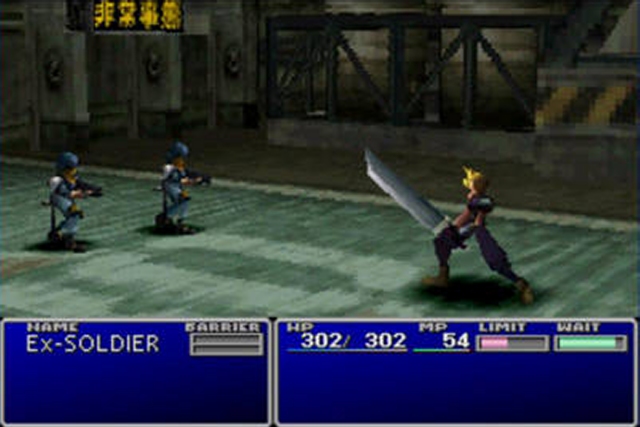
Active Time Battle, for all intents and purposes, takes all of the advantage of using a turn based system, goes out on a couple of dates with it, meets its parents, and then by candlelight, gently fucks it. During combat in Final Fantasy VII, a bar fills up (the one labeled “Wait”) for each character. Once that’s full a menu conveniently pops up to let you tell the system what you want it to do, easy peasy lemon squeezy. “Ooh,” a player might say, and perhaps remove a monocle from their eye. “Look at these options! How droll. I think I shall…” but then they are rudely interrupted. It would seem that while they were making their selection, the enemy shot them in the jowls. “I say!” this hypothetical Monopoly Man-esque player might declare, before being attacked again, sending their face meats all aflutter.
This is entirely due to the fact that there is no way to know in what order things are going to go in. Not to mention that the enemies don’t wait for you. This has a few effects. First of all, it makes me want to chew glass. Second, by reducing the time available to make choices the game makes them irrelevant. So if you want to select an ability and it’s buried deep in a menu, you’ll select it less frequently. This is especially true against lower level enemies. Eventually a player is trained to default to the easiest option (read: usually Fight) no matter what. Finally, the ability to plan gets defenestrated out of a high window simply because there is no time to create said plan, and no way of understanding the order that anything will play out. The only risk to weigh is getting the attack selected quickly enough to maximize damage output.
I can hear the cries through the net now, “But there is a setting to change the ATB to Wait.” That is true, but that argument is like anything on the E! network – totally vacuous. The regular ATB is the default setting, which means that is how it was designed. Not to mention the fact that changing it doesn’t tell you anything about the turn order or when enemies might finally pull their fingers from their asses and place them on firing triggers instead.
A better example of this type of combat is in Final Fantasy X. That game employed a turn based system where the next half dozen character’s turns were clearly listed. This made the battles more tactically interesting. When a player doesn’t need to select whatever in order not to get skinned and rolled on like a prophylactic, they get to select the best option available. FFX gives the player a wealth of information and then gives them the time and flexibility to make the most of it. Final Fantasy VII instead hides all of that information and forces you to hurry up before you can think too much about it.
But that’s the real secret for the inclusion of the ATB system – there are actually no choices to make. Spells have limited capabilities and few meaningful interactions in combat, not to mention that they get buried so deeply inside the rancid colon of the menu that you actually lose tempo selecting them. Eventually every attack doles out 9999 damage like it’s going out of style so it doesn’t matter. I suppose if you really hate yourself, but want to get the maximum damage per action there’s always the Knights of the Round. It looks like this, and just in case you needed more dis-interactivity, you can’t skip it.
You know, just know, that somebody out there saw that and thickened up a little bit.

